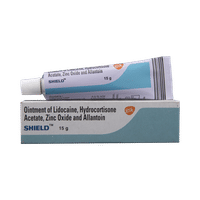Rs.194for 1 strip(s) (10 tablets each)
food interaction for Tri-Olmetor
alcohol interaction for Tri-Olmetor
pregnancy interaction for Tri-Olmetor
lactation interaction for Tri-Olmetor
food
alcohol
pregnancy
lactation
Tri-Olmetor 20 Tablet may be taken with or without food.
None
None
CAUTION
It is unsafe to consume alcohol with Tri-Olmetor 20 Tablet
UNSAFE
Tri-Olmetor 20 Tablet is not recommended during pregnancy as there is positive evidence of fetal risk based on animal studies. However, it may still be prescribed by a doctor in situations where the benefits outweigh the risks.
CONSULT YOUR DOCTOR
Tri-Olmetor 20 Tablet may be unsafe to use during breastfeeding. Limited human data suggests that the drug may pass into the breastmilk and harm the baby. It should be used only if the expected benefit outweighs the potential risk. Please consult your doctor.
CONSULT YOUR DOCTOR
SALT INFORMATION FOR Tri-Olmetor
Olmesartan Medoxomil(20mg)
Uses
Olmesartan Medoxomil is used in the treatment of Hypertension (high blood pressure), prevention of heart attack and stroke and Heart Failure.
How it works
Olmesartan Medoxomil is an angiotensin receptor blocker (ARB). It relaxes the blood vessel by blocking the action of a chemical that usually makes blood vessels tighter. This lowers the blood pressure, allowing the blood to flow more smoothly to different organs and the heart to pump more efficiently.
Common side effects
Dizziness, Headache, Cough, Fatigue, Abdominal pain, Back pain, Anemia (low number of red blood cells), Upper respiratory tract infection, Increased triglyceride level in blood, Low blood platelets, Itching, Incresed liver enzymes, Angioedema (swelling of deeper layers of skin), Increased creatinine level in blood
Amlodipine(5mg)
Uses
Amlodipine is used in the treatment of Angina (heart-related chest pain), Hypertension (high blood pressure), Arrhythmia, hypertensive emergency, subarachnoid haemorrhage and anal fissure.
How it works
Amlodipine is a calcium channel blocker. In high blood pressure, it normalizes the blood pressure by relaxing the blood vessels to reduce the pressure on them, thereby improving the blood flow in the body. The enhanced blood flow in the body, further relaxes the heart muscles by reducing the workload on the heart. It also improves the oxygen flow in the body, thereby, preventing any heart-related chest pain.
Common side effects
Headache, Nausea, Abdominal pain, Flushing (sense of warmth in the face, ears, neck and trunk), Dizziness, Palpitations, Edema (swelling), Hypotension (low blood pressure), Chest pain, Fainting, Muscle cramp, Visual disturbance, Shortness of breath, Change in bowel habits, Weakness, Insomnia (difficulty in sleeping), Mood changes, Depression, Tremors, Taste change, Hypoesthesia (decreased sensitivity to stimuli), Paresthesia (tingling or pricking sensation), Arrhythmia (irregular heartbeats), Vomiting, Dryness in mouth, Rash, Muscle pain, Back pain, Frequent urge to urinate, Impotence, Breast enlargement in male, Decreased white blood cell count (lymphocytes), Low blood platelets, Allergic reaction, Increased glucose level in blood, Confusion, Hypertonia (increased muscle tone), Pancreatic inflammation, Gingival hyperplasia, Hepatitis (viral infection of liver), Angioedema (swelling of deeper layers of skin), Stevens-Johnson syndrome
Hydrochlorothiazide(12.5mg)
Uses
Hydrochlorothiazide is used in Hypertension (high blood pressure), Heart Failure and kidney stone. It treats oedema (fluid overload) associated with heart, liver, kidney or lung disease.
How it works
Hydrochlorothiazide is a diuretic which lowers blood pressure by removing extra water and certain electrolytes from the body. Over time it also relaxes blood vessels and improves blood flow.
Common side effects
Increased uric acid level in blood, Decreased magnesium level in blood, Orthostatic hypotension (sudden lowering of blood pressure on standing), Anemia (low number of red blood cells), Urticaria, Xanthopsia, Pulmonary edema, Agranulocytosis (deficiency of granulocytes in the blood)
SUBSTITUTES FOR Tri-Olmetor
60 Substitutes
60 Substitutes
Sorted By
 Rs. 218.44pay 10% more per Tablet
Rs. 218.44pay 10% more per Tablet Rs. 304.50pay 3% more per Tablet
Rs. 304.50pay 3% more per Tablet Rs. 132.59save 33% more per Tablet
Rs. 132.59save 33% more per Tablet Rs. 127.87save 34% more per Tablet
Rs. 127.87save 34% more per Tablet Rs. 263.93pay 36% more per Tablet
Rs. 263.93pay 36% more per Tablet
Expert advice FOR Tri-Olmetor
- Take it at the same time every day to help you remember to take it.
- It can make you feel dizzy for the first few days. Rise slowly if you have been sitting or lying down for a long time.
- Your doctor may get regular tests done to monitor the level of urea, creatinine, and potassium in your blood.
- Avoid taking anti-inflammatory medicines such as ibuprofen along with this medicine without consulting your doctor.
- It may increase the level of potassium in the blood. Avoid taking potassium supplements and potassium-rich foods such as banana fruit juice, coconut water, and broccoli.
- Do not take Olmesartan Medoxomil if you are pregnant or breastfeeding.
- Do not stop taking it suddenly without talking to your doctor.
- Take it at the same time every day to help you remember to take it.
- It can make you feel dizzy for the first few days. Rise slowly if you have been sitting or lying down for a long time.
- Your doctor may get regular tests done to monitor the level of urea, creatinine, and potassium in your blood.
- Avoid taking anti-inflammatory medicines such as ibuprofen along with this medicine without consulting your doctor.
- Do not take Olmesartan Medoxomil if you are pregnant or breastfeeding.
- Do not stop taking it suddenly without talking to your doctor.
Frequently asked questions FOR Tri-Olmetor
Olmesartan Medoxomil
Q. How long does it take for Olmesartan Medoxomil to work?
You may notice a decrease in your blood pressure effectively within 2 weeks of starting Olmesartan Medoxomil. However, it may take about 8 weeks to see the full benefits of this medicine.
Q. At what time of the day should you take Olmesartan Medoxomil?
Your doctor may suggest to take your first dose before bedtime, considering that this medicine can make you feel dizzy. After the very first dose you can take Olmesartan Medoxomil at any time of the day. It is important to take this medicine at the same time every day.
Q. Can I feel dizzy after taking Olmesartan Medoxomil?
Yes, the use of Olmesartan Medoxomil can make you feel dizzy. This may occur when you suddenly get up from a lying or sitting position. To lower the chance of feeling dizzy or passing out, rise slowly if you have been sitting or lying down.
Amlodipine
Q. How long does it take for Amlodipine to work?
Amlodipine starts working on the day it is taken. However, it may take weeks to see the full effect. You should continue taking the medicine even if you feel better or if you do not notice any considerable difference. Consult your doctor if you have any concerns or you feel worse after taking the medicine.
Q. Does Amlodipine cause itching?
Amlodipine may cause itching in some patients, though it is an uncommon side effect. However, if you experience severe itching contact your doctor.
Q. Is Amlodipine bad for the kidneys?
No, there is no evidence that Amlodipine causes deterioration of kidney problems. Amlodipine can be used in normal doses in patients with kidney problems. In fact, its blood pressure-lowering effect, it helps to prevent injury to the kidneys due to hypertension.























